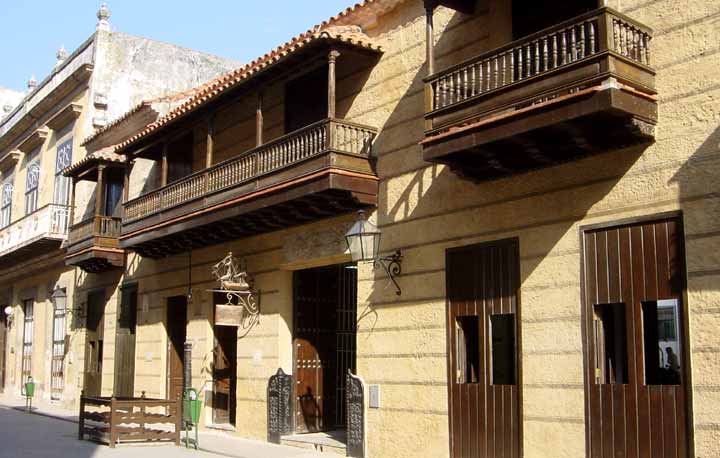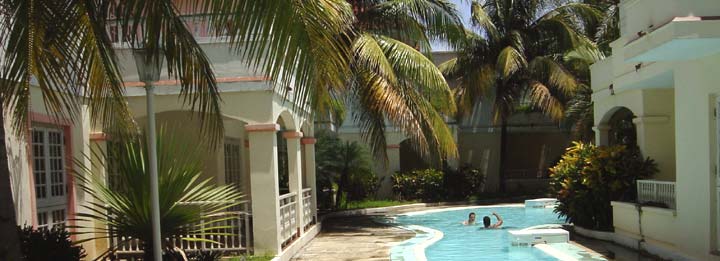| Colonial Havana | Home Cuba Flights Cars Hotels Havana | |
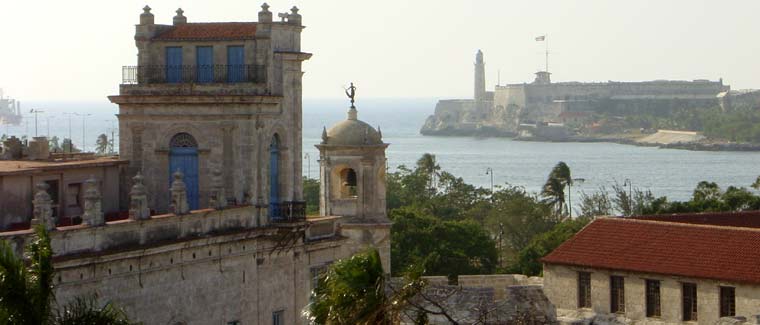 |
||||||||||
Havana has been considered an ideal enclave for communications and trade. These factors led to it being declared the capital of the island in 1553 , under the name of Real Cedula. Another royal decree in 1634 christened it with the titles, "Key to the New World" and the 'Fortified City of the West Indies'. Ever since it was founded at its present site on November 1519 the last of the first seven towns in Cuba, its subsequent development is remarkable in its diversity of styles and trends from different periods, which are represented in the architecture of its town centre and its suburbs. |
||||||||||
How to get to Havana Havana, the main gateway to Cuba, is linked with over 40 cities around the world by Jose Marti International Airport and the Aerocaribbean terminal. Havana can be reached from other regions in the country via the Autopista Nacional (national highway), Carretera Central (main motorway), the Via Blanca and Other minor roads. Cruise liners and leisure boats find a safe port in Bahia de La Habana and the Marina Hemingway also in marina Puertosol Tarara. |
||||||||||
Havana Sun and Sand An extensive coastline of magnificent beaches stretching over 14 km borders the city. First to appear in the direction of the setting sun, some 20 minutes from the city centre, is Bacuranao cove, then comes Tarara and straight after that come: Megano, Santa Maria , Boca Ciega and Guanabo coves, which make up the beaches of Playas del Este. Towards the west, the people of Havana often bathe at small local beaches know as "playitas", where the sea meets streets name: 12, 16, 24 and 70 in the Miramar district, and a little further away, continuing along Panamericana street, lies El Salado, another great option for swimming and practising water sports. |
||||||||||
Capital Havana It forms part of City of Havana province, which in an area of only 727 km˛ about 0.65% of the total surface area of the archipelago, is home to 25% of the Cuban population. It still retains its former elegance and its exclusive and exciting atmosphere. As the centre the country’s business, social, scientific and cultural life, today it represents a tourist area with no end of possibilities thanks to its ability to meet visitors’ most varied and demanding requirements and to its extensive hotel and service infrastructure. Its main value in terms heritage lies in its extremely extensive array of buildings that cover a whole range of architectural styles spanning almost five centuries, from the pre Baroque, the Baroque, the neo gothic, neoclassicism, eclecticism, the renaissance, rococo, art nouveau and art deco, to the modern movement.
|
||||||||||
Culture The Cuban capital boasts some 30 first class museums and which were the result of by Cuban historians, intellectuals and scientist who were responsible for recovering and preserving historical objects and documents, decorative items and work of art. The city also has 10 art galleries, 25 theatres and many other cultural institutions that are dedicated to promoting the work of talented young people and well established artists from Cuba in general and from different regions around the world. They also hold important international courses and festivals of music, cinema, ballet, contemporary dance and plastic art, conferences and professional exchanges, such as the Cuban National Ballet and the Casa de las Americas, and others that are equally popular such as the Callejon de Hammel, a great tourists attraction. |
||||||||||
|
Colonial Havana Is the best place to embark on a discovery of the history, culture and architecture of the capital in chronological order. Historical Centre contains a valuable legacy of bastions, squares, small palaces, religious temples, museums, legends and traditions dating back from the 16th to the 20th centuries. Many of these buildings have become permanent museums, hotels and cultural institutions, which exhibit items of heritage or temporary collections of contemporary works. Its entire area covering a total of 143 hectares was declared a National Monument in 1978, a World heritage Site in 1982 and an Area of Major Importance for Tourism in 1995. It preserves 88 monuments of historical and architectural value, 860 of environmental value and 1760 harmonious building. Those places not to be missed include: Palacio de los Capitanes General, Real Fuerza and La Punta castles, El Templete, Santa Clara Convent, San Francisco de Asis, Palacio, Armas, Vieja and Catedral squares and the surrounding buildings, San Francisco de Asis Basilica and Havana Cathedral. A square coveted by pirates, corsairs and enemies of the city, san Cristobal de la Habana had to equip itself with a strong system of defence. The first castle to appear was the Castillo de la Real Fuerza , which was later joined by the Castillo de La Punta, the Castillo de los Tres Reyes del Morro and the Fortaleza de San Carlos de la Cabana. Designed by Italian engineer Juan Bautista Antonelli, the Morro Castle was built between a key factor in the defence of the city, in particular when Havana was overrun by the English. It has two museum halls, one on the city’s history of and another on Great Journeys, which describes the main seafaring expeditions of Spain and Portugal during the 15th and 16th centuries. Construction began on La Cabana, the largest of the military installations that Spain established in America, in 1763 on the eastern bank the bay. It was ready for action in 1774, but never had its baptism of fire. Its imposing presence served as a deterrent for enemies of the Spanish crown. Every night at 9pm the Canon Fire Ceremony is held here. The Carlos J. Finlay Historical Science Museum, the first institution of its kind to open in Cuba 1874, reveals the history of a science in the country, the participation of Cuban doctors in the wars of independence, a pharmacy from the 19th century, a scientific laboratory of the period and brief synthesis of international science. It was formerly the Royal Academy of Medical, Physical and Natural Science of Havana, where Cuban doctor Carlos J. Finlay announced discovery of the agent that transmitted yellow fever. |
||||||||||
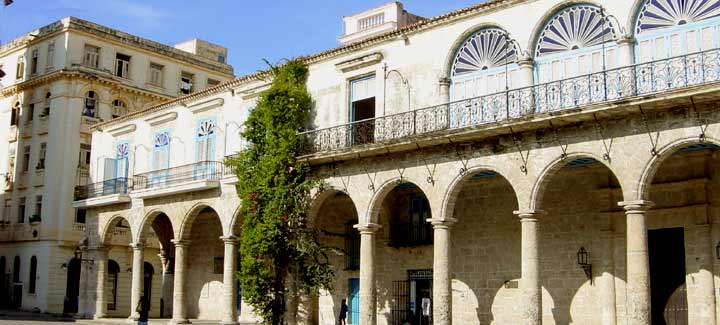 Old Churches and Convents: Many of them belong to the religious buildings build by Spanish in the New World, can be seen in the Cuban capital, where there are some of the most important and highly esteemed sanctuaries in the country. Catholicism and Afro-Cubanism are the two creeds that are most established religions. The Rum Museum and Havana Club Foundation, formely the mansion of the Count of Mortera, promotes the link between the history of rum in Cuba, in particular the "Havana Club", and national culture. It offers a small scale reproduction of the production process of famous Cuban rums, from the sugarcane plantation to industry. There is always time sample the different varieties of leading Cuban brand and other Cuban rums. An exponent of avant-garde architecture from halfway through the 20th century , the National Museum of Fine Art exhibits a valuable collection that includes Cuban artists from the colonial period to the present day. Such as Miguel Melero, Esteban Chartrand, Armando Menocal, Victor Manuel, Rene Portocarrero, Wilfredo Lam, Servando Cabrera and Amelia Pelaez: originals of European painting by Rubens, Murillo, Zurbaran, Velazquez, Goya and Hans Memling, among others; and by the ancient Egyptian, Greek, Roman and Latin American civilisations. A major part of the Plaza de la Revolucion Jose Marti the memorial dedicated to the figure of the apostle was opened in 1996, on the occasion of the 143rd anniversary of the birth of Cuban’s National Hero. It preserves original relics, document and engravings relating to his life and work. The obelisk in the form of a start is the base of the highest vantage-point in the city, a marble-covered cement tower which rises to a height of 138.5 metres above sea level. The Napoleonic Museum, a small palace built in the renaissance style, holds one of the most complete collections of weapons, works of art and personal items of clothing that belonged to Napoleon Bonaparte or related to his life. |
||||||||||
|
Active Tourism: There are two main centeres for practising water sports in the Cuban capital: Comunidad Tiristica Marina Hemingway, on the west coast, and Marina Puertosol Tarara, at the east. Finishing tournaments and regattas are organised every year. There are numerous facilities for diving. The area of immersion for diving off the coast of Havana stretches for over 100 kilometres and includes 72 places which are suitable for practising theirs activity .there are four diving centres at the Club Havana, Marina Hemingway, playa El Salao and Marina Puertosol Tarara. In the water on the northern coast of Havana there are many corals, including the bridal bouquet, the cavernous corral and the so-called brain corral. The sea fauna here is diverse and visibility is extensive. |
||||||||||
Havana Events: The location par excellence for convention tourism. The Complejo Palacio de Convenciones, the EXPOCUBA, trades fair pavilion, Centro de Convenciones Capitolio and certain hotels such as the Habana Libre Tryp, Melia Cohiba, Hotel National de Cuba, Melia Havana, Panorama, Comodoro, the Parque Central and the La Pradera, all equipped with modern conference halls, are among the places specialising in this kind of activity and welcoming incentive groups. Cuban Salsa music Cuba Music |
||||||||||
Leisure and Restaurants: Havana offers a rich and buzzing cultural life, featuring international festivals of Classical and contemporary dance, cinema, plastic arts, comedy, book, music, poetry and folklore. Among others: fun packed evening of music, concerts, theatrical shows, roundelays and performances to suit all taste. Cubans are renowned for their dancing and musical skills in genres such as: Danzon, Son, Bolero, Cha Cha, Salsa and Mambo. The capital is full of places where you can watch these music being performed, learn a few steps and listen to the different rhythms, in: Casa de la Musica, Havana Cafe in Melia Cohiba, Salon Rosado Benny More, Cafe Cantante Mi Habana, Chan Chan, Jazz Club de La Zorra and the Cuervo, Gato Tuerto, Pico Blanco and the real Caribbean cabaret club Turquino, Copa Room Parisien and ant best cabaret in the Caribbean Tropicana. Of these following are worth a special mention: The Salon Rosado Benny More is considered the most musical place on the island. Appearing here are the finest dancers and orchestras in the country. In 1997 a new Guinness Record was made here for the longest son (a Cuban folk son and dance) in the world, which was played for 100 hours by 95 groups that brought together around a thousand musicians. El Patio de la Casa 18 is an attractive place where each night those who enjoy good Cuban music are invited to come and listen to distinguished soloists and small groups. El Patio de la Rumba: the headquarters of the National Folkloric Group invites people to enjoy unique and original shows, which reflect Cuban traditions. In time to the beat of the drums, the harpsichord and the rhythm of songs, dances such as the rumba, the columbia and the guaguaco are performed for visitors who may participate alongside the artists. Visitors who come to Havana without spending a night at the Cabaret Tropicana might as well not have been here. None of the Cuban cabaret shows boast the same level of fame and international renown. Every night in Bajo las Estrellas its enormous hall with room for over 1000 spectators, a show is staged which is full colour, splendour and refinement. 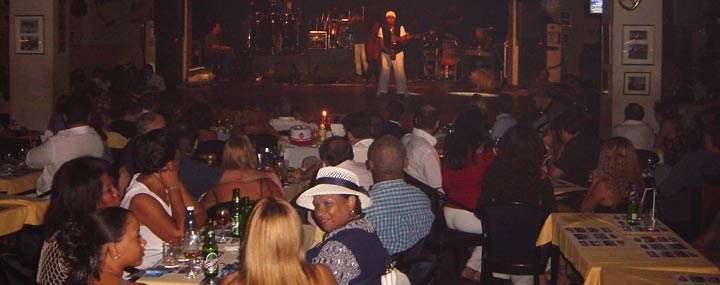 |
||||||||||
Havana’s Leisure areas: National Botanic Gardens exhibits species of plants from America, Africa, Oceania and Asia over its 600 hectares. A fifth of its land is dedicated to indigenous plants (some 7000 superior plants are on display), half of which are endemic. It boasts an extensive collection of palm trees from all latitudes, a vegetarian restaurant and a Japanese Garden. Commonly know as the Pulmon Verde (Green Lung) of the city, Lenin Park covers an area of 754 hectares, with a wealth of bamboo, conifers, yagrumas and palm trees. It is possible to hire rowing boats and horses at the park and hire the service of its horseriding centre, offers visitors an extensive range of eating establishments, swimming pools, a funfair and an art gallery. Over 1000 animals belonging to a hundred different species from virtually all of to the continents in their natural environment, not always behind bars, inhabit the 340 hectares of the National Zoo. Visitors can tour this zoo on the outskirts of the city either on foot or in a vehicle. Many restaurants in the capital are famous beyond the island’s borders owing to their elegant, refined and exquisite food. These restaurants specialise in the best of Cuban, Spanish, Italian, Japanese, Mediterranean, Mexico and international cuisine. Such as: La Bodeguita del Medio and Floridita, have been chosen by many important celebrities as their favourite place and recognised among the most famous people in the world. Also highly regarded are La Ferminia, El Tocororo, Le Select, Polinesio, El Aljibe, Don Cangrejo, El Patio, D´Giovanni, Papa´s, Centro Vasco, Las Ruinas, La Torre o 1830, El Cafe del Oriente. |
Copyright © Netssa




